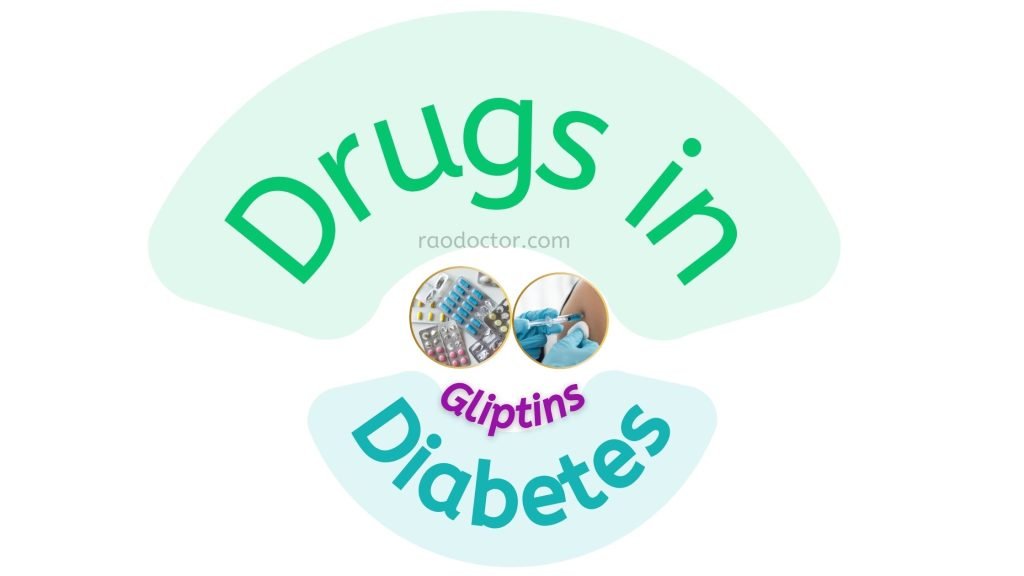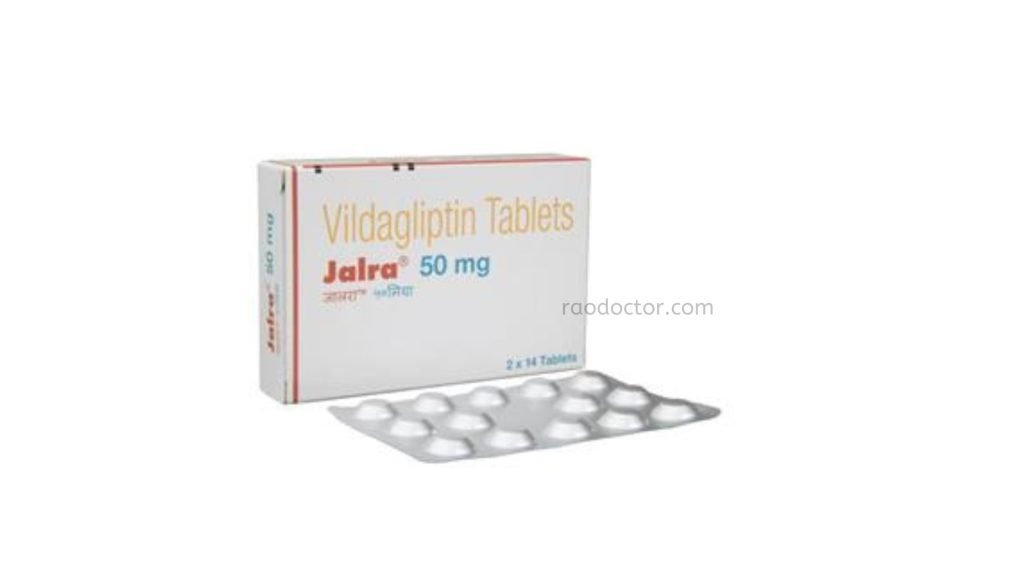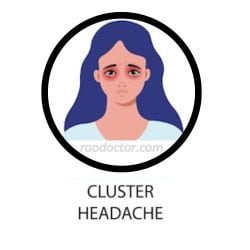
Table of Contents
Gliptins- what are they and how do they help in diabetes
Listen to this article while you scroll down-
The history of diabetes treatment dates back to the 2nd century, when it was discovered by a Greek scientist- Aristaeus of Cappadocia. Since then, the treatment has evolved manifolds, with discovery of insulin in 1923 by Freddrick Banting and Charles Best. Ever since that period, a lot of progress has been made in the field of medicine and newer drugs have been discovered that now help in controlling blood sugar efficiently.
There are many people out there who advocate that diabetes can be treated without medicines. Well, that is partly true- diabetes in pre-diabetic condition can be treated with lifestyle changes and diet, but a fully developed diabetes needs proper medications to control blood sugar.
In this article we will learn about the newer drugs on the block or horizon that your doctor or your diabetologist may be treating you with. In this article we will learn about a group of drugs called Gliptins, even though these medicines have been market for some time now.
What are gliptins?
In my earlier article on treatment of diabetes, I had discussed broadly about oral antidiabetic drugs and insulin administration. Now, in this article we learn about a new group of oral antidiabetic drugs that inhibit enzymes that prevent release of insulin from the pancreas- the DPP4 inhibitors or the Gliptins. How they work is beyond the scope of this article, but we will surely learn about the pros and cons of using them. These medicines are relatively safe compared to the older group of medicines.
The gliptins- a comparative study of 5 varieties-
There are about six varieties of gliptins available in India and we will learn the effects and side-effects of using them in this article. These gliptins are available as-

1. Sitagliptin
2. Vildagliptin
3. Saxagliptin
4. Linagliptin
5. Tenegliptin
6. Alogliptin
I have not included the last drug because it has come into the Indian market recently and is not prescribed by many diabetologist. However, it is available under the name Aloja.
How do these drugs work?
Dipeptidyl peptidase-4 (DPP 4) inhibitors (for example, sitagliptin, saxagliptin, linagliptin, and alogliptin) both stimulate the pancreas to produce more insulin and delay the absorption of glucose by the intestine.
Source-MSD Manual
These drugs have one thing in common: DPP-4 enzyme inhibition; and have different binding affinity to other enzymes, which distinguishes them from each other.
The elevated levels of DPP4 enzymes in the body are responsible for lower insulin secretion by the pancreas and it is quite common in Type 2 diabetes.
The gliptins are a comparatively new class of drugs in the treatment of Type II Diabetes Mellitus (T2DM) that inhibit the DPP4 enzymes. So, let’s dig into them one by one.
Sitagliptin [Januvia, Istavel]

This is the first drug in this class, approved by FDA in the year 2006. It is taken twice a day with meals and can be administered on an empty stomach. There is no need for dose adjustment and there are no food restrictions with sitagliptin.
Sitagliptin has been shown to be effective in lowering HbA1c levels, blood glucose levels, body weight, triglycerides and LDL cholesterol levels.
There were no significant changes seen in HDL cholesterol or blood pressure values when compared to placebo during clinical trials. It does not cause hypoglycemia or weight gain. The most common side effects are nasopharyngitis (common cold) and headache.
Vildagliptin (Galvus, Jalra)

This drug was approved by FDA in 2007 as an adjunct to diet and exercise for the treatment of T2DM patients with inadequate glycemic control on metformin monotherapy or sulfonylurea alone. Vildagliptin is a once daily tablet that can be taken without regard to food intake at any time of day including at mealtimes. In clinical trials it was shown that vildagliptin lowered HbA1c levels by 0.6%-0.8% points.
Vildagliptin is not associated with hypoglycemia or weight gain. The most common side effects are nasopharyngitis (common cold) and headache.
Linagliptin (Trajenta, Ondero)

This drug was approved by FDA in 2014 as an adjunct to diet and exercise for the treatment of T2DM patients with inadequate glycemic control on metformin alone.
Linagliptin is a once daily tablet that can be taken without regard to food intake at any time of day including at mealtimes or before bedtime if needed.
In clinical trials it was shown that linagliptin lowered HbA1c levels by 1%-1.3% points when compared to metformin alone over 12 weeks of therapy, which was statistically significant, but less than the 1-1/2% points reduction seen with saxagliptin plus metformin or sitagliptin plus metformin over a 24-hour period.
Tenegliptin ( Tenefit, Tenefla)

This drug lowers post-meal blood sugar very well. It can be used once or twice a day. Only one strength- 20 mg is available.
Studies show that it lowered HbA1c levels by 1.2%-1.4% points when used for a longer period. The most common side effects are nasopharyngitis (common cold) and headache.
Saxagliptin (Onglyza)

This drug was approved by FDA in 2010 as an adjunct to diet and exercise to improve glycemic control in adults with T2DM or adults with T2DM and glucose intolerance.
It is a once daily tablet that can be taken without regard to food intake at any time of day including at mealtimes. In clinical trials saxagliptin lowered HbA1c levels by 1%-1.3% points.
Saxagliptin is not associated with hypoglycemia or weight gain but there have been reports of nausea, vomiting, abdominal pain etc.
The only drawback with saxagliptin is its cost.
Alogliptin (Aloja)
This is a comparatively newer drug, and it works by increasing the release of insulin from the pancreas and decreasing the hormones that raise blood sugar levels. This reduces the fasting and post meal sugar levels.
It is available as 12.5 mg and 25mg tablets.
Precautions- Should be used in kidney disease with proper guidance of a nephrologist. Precaution should also be taken when using in combination with insulin or other anti-diabetic drugs.
Availability-
All these medicines can be ordered online at a discount with a proper prescription from your diabetologist or family physician.
Side effects of using Gliptins-
Most of these gliptins have these common side effects, but are rare if managed properly-
- Hypoglycemia (low blood glucose level)
- Tremors
- Headache
- Dizziness
- Fatigue
- Nausea
- Upper respiratory tract infection
- Urinary tract Infection
Combination of Gliptins with other anti-diabetic medicines-
All the medicines described above do well in combination with other drugs like metformin and insulin. But when used with sulfonylureas like glimepiride, caution should be exercised as the chances of getting hypoglycemia are high.
I use them as a combination with metformin in most of my diabetic patients.
Disclosure:
Some of my articles may contain affiliate links; this means each time you make a purchase, I get a small commission. However, the input I produce is reliable; I always handpick and review all information before publishing it on my website. I can ensure you will always get genuine as well as valuable knowledge and resources.
Conclusion
I now conclude this short article on the use of a comparatively new drugs for treating diabetes. Hope this article has been useful to you and hope you benefit from the information I have provided.
My next topic for learning will be Thyroid Disease, a fairly common disease nowadays besides diabetes. Do sign up for my newsletter to get my latest articles in your mailbox.
Adios.



![ORAL ANTI-DIABETIC DRUGS[ OADS] 17 Diabetes logo](https://raodoctor.com/wp-content/uploads/2020/07/Untitled-design-2.png)
